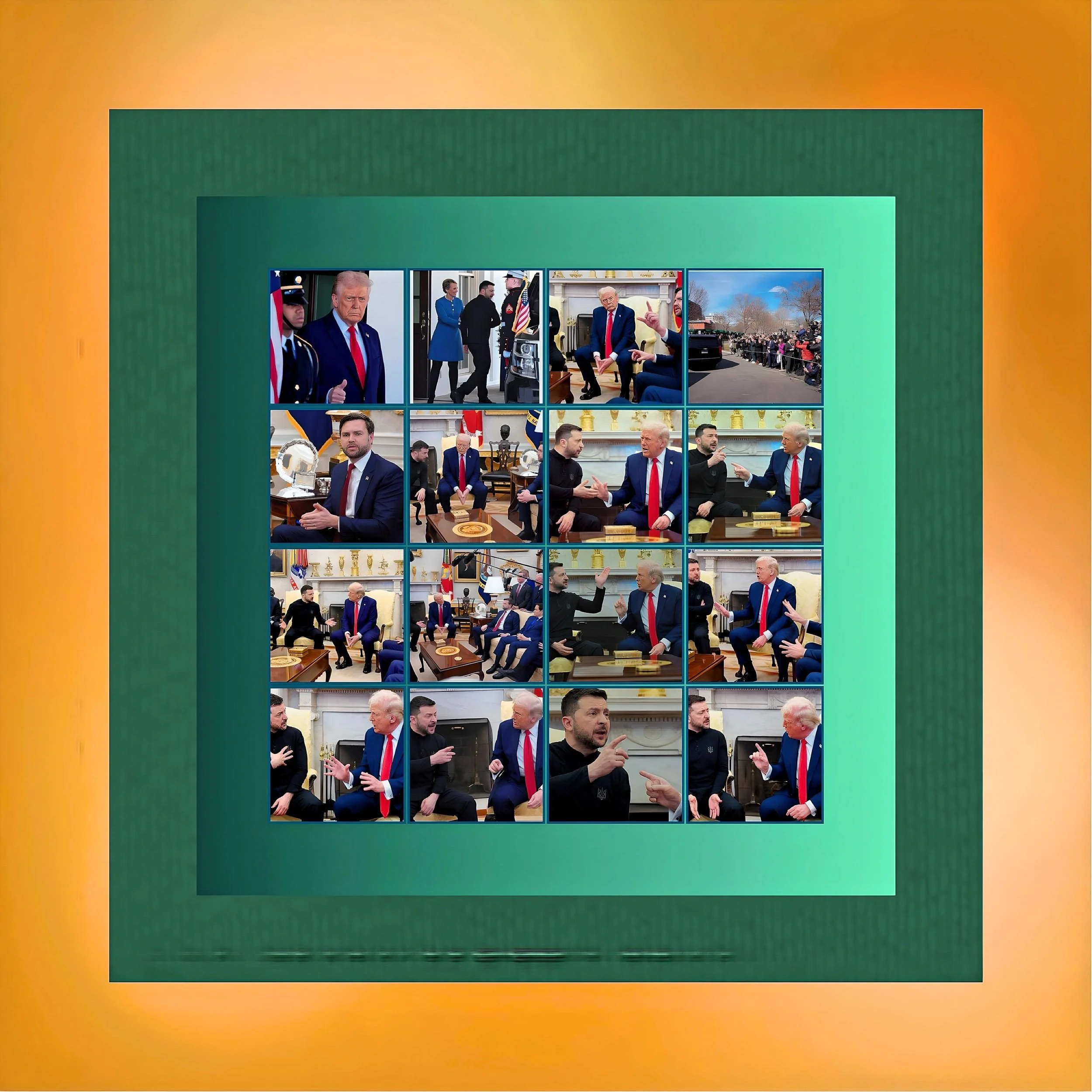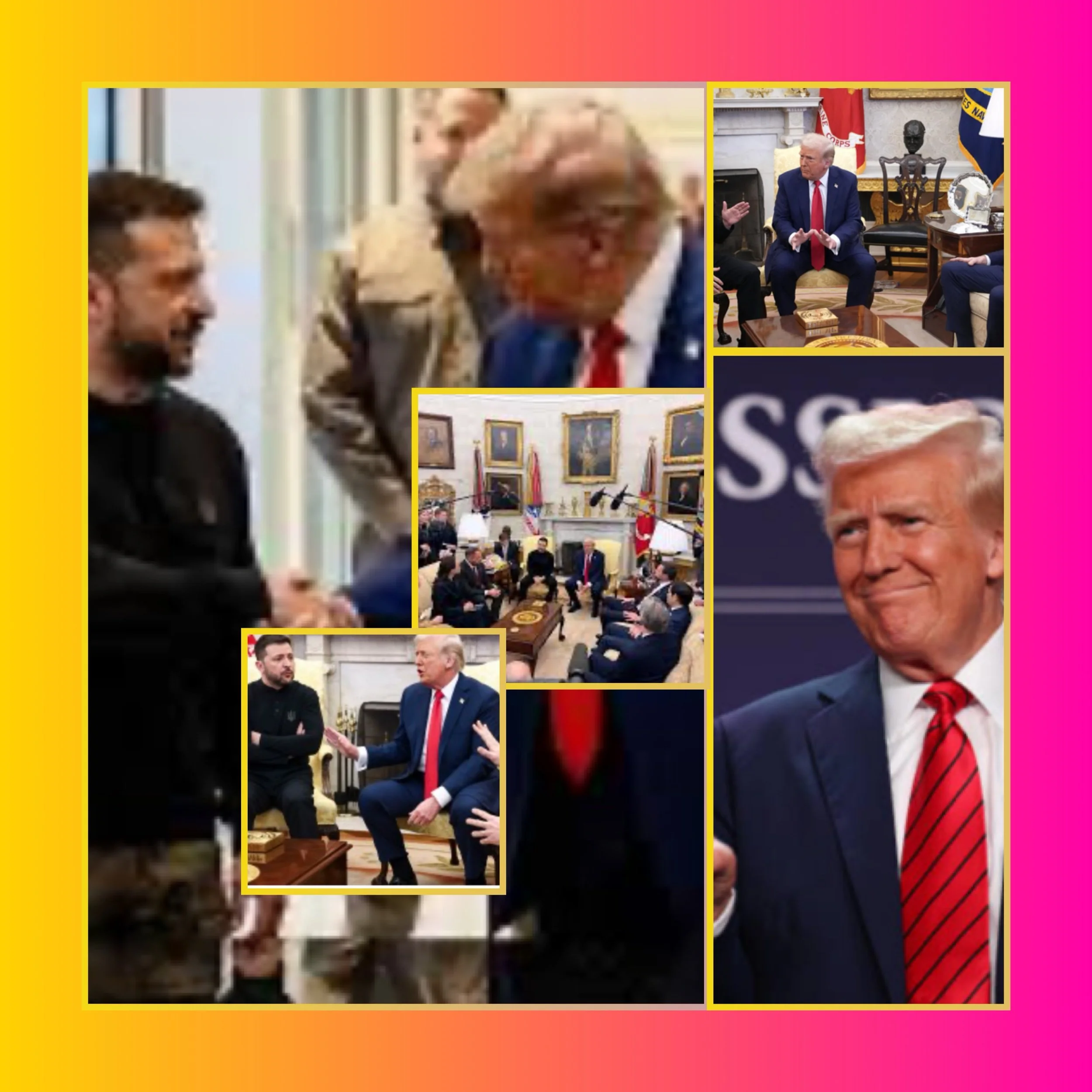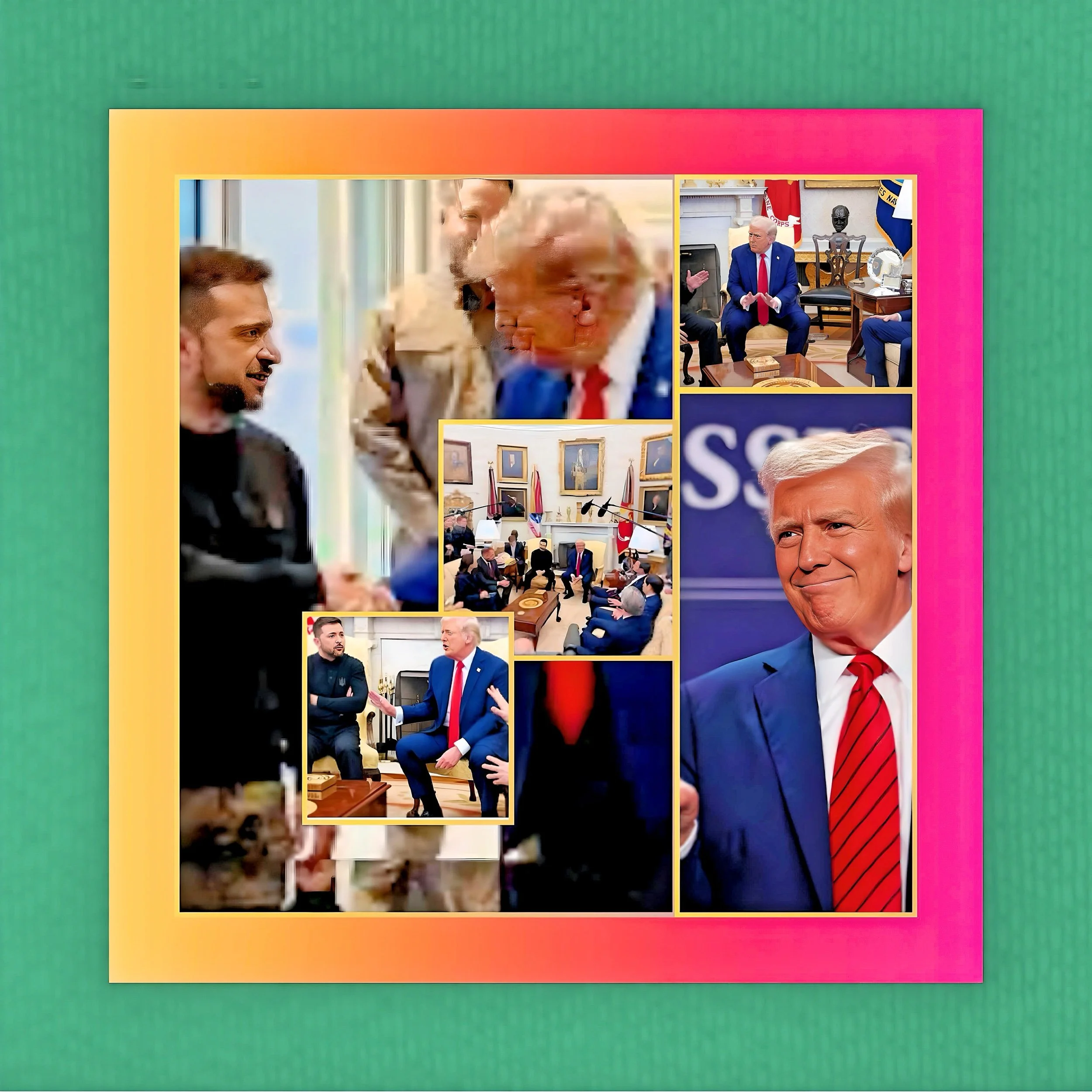Assessing the Trump-Zelensky Oval Office Meeting: Diplomatic Breakdown and Strategic Implications
Introduction
The February 28, 2025, meeting between U.S. President Donald Trump and Ukrainian President Volodymyr Zelensky marked one of the most contentious diplomatic encounters in recent memory, exposing deep fissures in U.S.-Ukraine relations and raising critical questions about the future of Western support for Kyiv.
The 10-minute confrontation, characterized by raised voices, personal accusations, and geopolitical brinkmanship, underscored the challenges of reconciling Trump’s transactional approach to foreign policy with Zelensky’s existential struggle for sovereignty.
While the meeting yielded no immediate breakthroughs, its fallout offers lessons in diplomatic strategy, the risks of public confrontations, and the precarious balance between alliance maintenance and unilateral dealmaking.
Contextualizing the Confrontation
From Mineral Deals to Martial Rhetoric
Escalating Tensions Over U.S. Aid and Ukrainian Gratitude
The meeting occurred against a backdrop of simmering frustration within the Trump administration over Ukraine’s perceived lack of gratitude for American military and financial support.
Since taking office in January 2025, Trump has repeatedly questioned the value of continued aid to Ukraine, framing it as a burden on U.S. taxpayers rather than a strategic investment. Vice President JD Vance amplified this sentiment during the Oval Office exchange, accusing Zelensky of “disrespect” toward American contributions—a charge rooted in Trump’s longstanding belief that allies should offer overt praise for U.S. assistance.
Zelensky’s visit was initially intended to finalize a deal granting U.S. companies access to Ukraine’s rare earth mineral reserves, a proposal Trump had framed as partial compensation for aid.
However, negotiations over the minerals agreement became entangled with broader disputes about peace talks with Russia, election legitimacy in Ukraine, and Zelensky’s refusal to endorse Trump’s narrative of the war’s origins.
The Ukrainian president’s reluctance to publicly thank Trump—a recurring theme in the president’s criticism—appeared to catalyze the confrontation.
The Shadow of U.S.-Russia Talks in Saudi Arabia
Trump’s outreach to Russian President Vladimir Putin further complicated the dynamics. Days before Zelensky’s visit, U.S. and Russian officials held closed-door talks in Saudi Arabia to discuss potential peace terms, excluding Ukrainian representatives.
This exclusion mirrored Trump’s 2019 withholding of military aid to pressure Zelensky into investigating Joe Biden, an episode that led to his first impeachment.
Zelensky’s public objections to being sidelined—calling the Saudi talks a “surprise” and “false impression of negotiations”—reportedly angered Trump, who accused Ukraine of obstructing progress toward a settlement.
The Saudi discussions also revived Trump’s admiration for Putin, whom he described as having endured “a hell of a lot with me” due to the Mueller investigation.
This framing positioned Putin as a misunderstood partner rather than an adversary, contrasting sharply with Zelensky’s warnings about Russian expansionism.
European leaders, including French President Emmanuel Macron and UK Prime Minister Keir Starmer, had privately urged Trump to avoid concessions to Moscow. Still, their concerns appeared marginalized during the Oval Office clash.
Anatomy of the Confrontation
Key Exchanges and Immediate Fallout
Trump and Vance’s Dual Onslaught
The meeting began with Trump asserting his desire to be a “peacemaker,” referencing his aspirations for a grand bargain involving Russia and Ukraine.
However, tensions flared when Vance—previously a quiet observer in diplomatic settings—launched an unprompted critique of Zelensky’s leadership, declaring that Ukraine lacked the “cards” to continue resisting Russia.
Trump escalated the rhetoric, warning Zelensky was “gambling with World War III” and demanding immediate progress toward a peace deal: “You’re either here to make a deal, or you’re out. If we’re out, you’ll have to fight it out. I don’t think that will be pretty”.
Zelensky’s attempts to defend Ukraine’s military gains and emphasize the war's existential stakes were repeatedly interrupted.
Trump’s focus on extracting public gratitude—“Have you even said ‘thank you’ once?”—underscored his transactional view of alliances. The session concluded with Trump abruptly canceling a planned joint press conference and declaring Zelensky unwelcome until he demonstrated readiness for peace.
Zelensky’s Defiance and Diplomatic Damage Control
Zelensky refused to apologize after the meeting, tweeting that Ukraine remained “open to dialogue but not to surrender.”
His team framed the minerals agreement as a provisional step toward securing long-term U.S. security guarantees, downplaying Trump’s initial demands for $500 billion in compensation.
Behind the scenes, Ukrainian officials reportedly sought to placate Trump by accelerating negotiations over rare earth minerals, recognizing his desire for a “win” to tout domestically.
European reactions highlighted growing anxiety about U.S. reliability. German Chancellor Olaf Scholz warned that “abandoning Ukraine would destabilize NATO’s eastern flank,” while Macron reiterated France’s commitment to military support.
However, neither offered concrete pledges to offset potential U.S. aid reductions, reflecting Europe’s limited capacity to replace American assistance.
Evaluating the Meeting’s Outcomes- A Rating Framework
Short-Term Outcomes
Communication Breakdown vs. Tactical Gains
On a scale of diplomatic effectiveness, the meeting ranks poorly due to its public acrimony and failure to produce actionable agreements. Key shortcomings include:
Erosion of Trust: The confrontation deepened mutual suspicions, with Zelensky questioning Trump’s susceptibility to Russian disinformation and Trump dismissing Ukrainian leadership as obstinate.
Missed Opportunities: The collapse of the press conference deprived both leaders of a chance to recalibrate narratives. Zelensky lost a platform to appeal directly to U.S. voters, while Trump forfeited an opportunity to showcase dealmaking prowess.
Tactical Concessions: Zelensky’s agreement to advance mineral talks—though less exploitative than initial U.S. proposals—may provide Trump with symbolic leverage to justify continued, albeit reduced, aid.
Long-Term Strategic Implications
The meeting’s most significant impact lies in its revelation of divergent U.S.-Ukraine priorities:
Trump’s Priorities: Swift conflict resolution (even if favoring Russian interests), financial compensation for aid, and personal diplomatic accolades.
Zelensky’s Priorities: Sovereignty guarantees, sustained military support, and inclusion in peace processes.
These divergences suggest future interactions will remain fraught, mainly if Trump follows through on threats to condition aid on Ukrainian concessions.
Lessons for Both Leaders
For the Trump Administration: Risks of Public Confrontation
Diplomatic Repercussions: Publicly chastising a wartime ally undermines U.S. credibility, emboldening adversaries like Putin and unsettling NATO partners. The spectacle of Trump and Vance berating Zelensky risks alienating bipartisan Congressional supporters of Ukraine.
Negotiation Over Performance: Trump’s focus on extracting public gratitude—a performative aspect of his diplomacy—diverted attention from substantive negotiations over aid terms or mineral rights. Future engagements should prioritize backchannel talks to avoid televised breakdowns.
Consistency in Messaging: Contradictions between Trump’s praise for Zelensky’s bravery (pre-meeting) and accusations of obstinacy (post-meeting) create confusion among allies and adversaries alike. A unified administration stance is critical.
For Ukraine: Navigating Transactional Diplomacy
Leverage Through Concessions: Despite domestic criticism, Zelensky’s willingness to advance mineral talks demonstrates the necessity of offering Trump tangible “wins.” However, such concessions must be carefully calibrated to avoid compromising reconstruction efforts.
Multilateral Outreach: With U.S. support uncertain, Ukraine must intensify engagement with European and Asian partners. This week, Zelensky’s meetings with Starmer and Macron provided a model, though concrete commitments remain elusive.
Public Diplomacy: Zelensky’s post-meeting tweets, emphasizing openness to “dialogue,” helped mitigate perceptions of intransigence. Sustained outreach to U.S. lawmakers and media could help counterbalance Trump’s narratives.
Implications for U.S.-Ukraine Relations
Aid Conditionality and Congressional Dynamics
Trump’s threats to curtail aid, unless Ukraine demonstrates gratitude or peace progress, ignore Congress’s bipartisan support for Kyiv.
However, executive branch discretion over aid disbursement timelines could still disrupt military flows. The administration’s ability to leverage the minerals agreement as a substitute for Congressional appropriations remains untested but could provoke legislative pushback.
European Reassessments
European NATO members, particularly France and the UK, face renewed pressure to expand defense spending and aid to Ukraine. However, their capacity to replace U.S. contributions is limited: EU nations collectively provided €28.4 billion in military assistance to Ukraine from 2022–2024, compared to $44.9 billion from the U.S.
The meeting’s rancor may accelerate European efforts to develop autonomous defense frameworks, though progress will be incremental.
Global Diplomatic Repercussions
Putin’s Strategic Calculus
The Oval Office clash likely reinforced Putin’s belief that Western resolve is fracturing. Russian state media extensively covered the meeting, framing it as proof of Ukraine’s diplomatic isolation.
However, Putin remains cautious about overreach; his willingness to engage Trump in Munich talks suggests a desire to lock in gains before potential U.S. policy shifts.
China’s Observational Posture
Chinese officials closely monitored the meeting for insights into U.S. reliability. Beijing may perceive Trump’s transactional approach as an opportunity to expand its influence in Eastern Europe, particularly regarding access to Ukrainian minerals.
However, China’s tacit support for Russia complicates direct overtures to Kyiv.
Conclusion
A Pivotal Moment in Wartime Diplomacy
The Trump-Zelensky meeting epitomized the collision of personal diplomacy with geopolitical exigencies. While Trump secured short-term rhetorical victories by dominating the exchange, the long-term costs—eroded alliance cohesion, emboldened adversaries, and congressional skepticism—outweigh these gains.
For Zelensky, the encounter underscored the perils of overreliance on a mercurial U.S. partner, necessitating diversification of support channels.
The path forward demands recalibration: The U.S. must reconcile its desire for swift conflict resolution with the imperative to uphold Ukrainian sovereignty. At the same time, Ukraine must balance strategic concessions with democratic accountability.
As both leaders navigate these tensions, the lessons of this fraught meeting will resonate far beyond the Oval Office, shaping the contours of 21st-century alliance politics.






